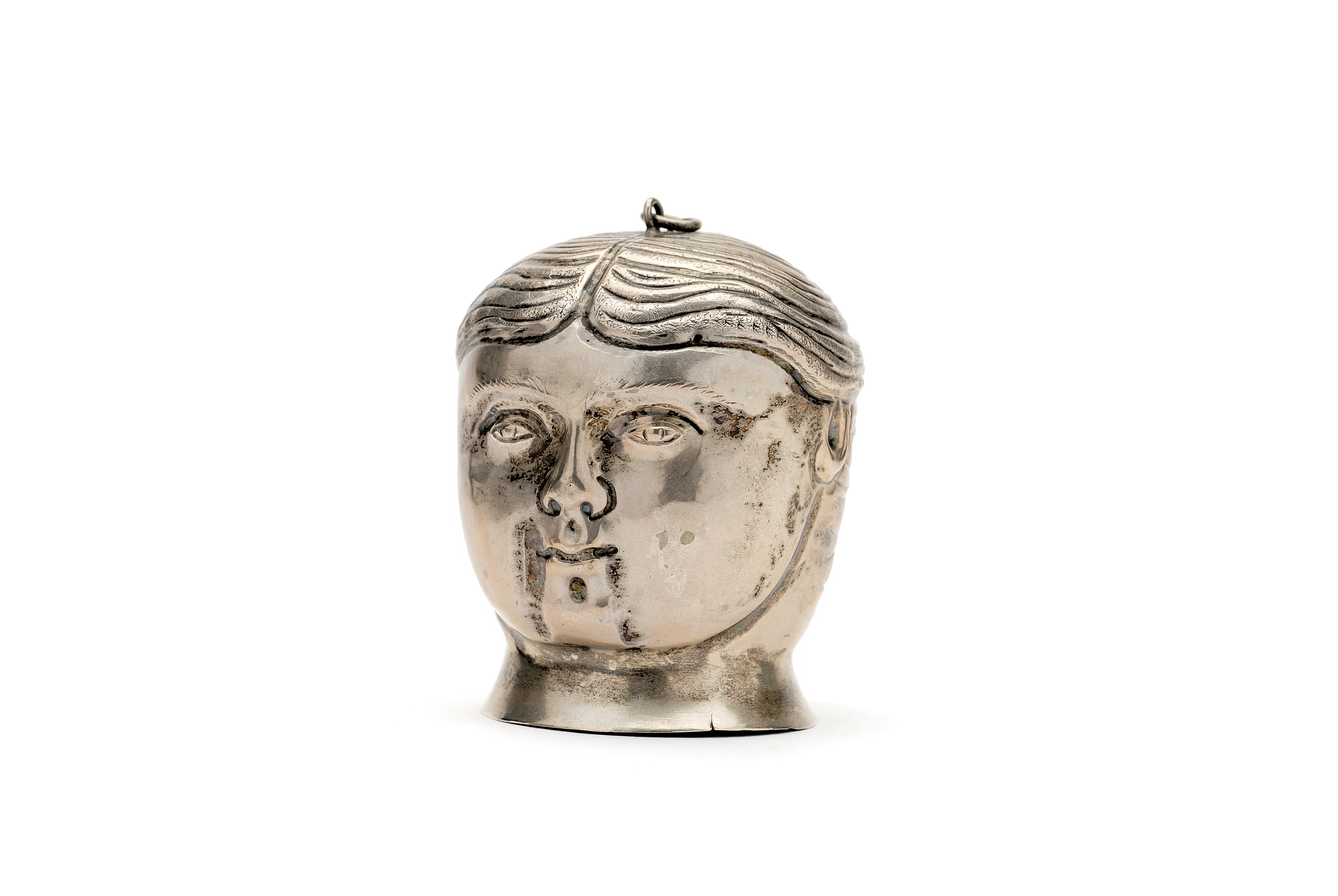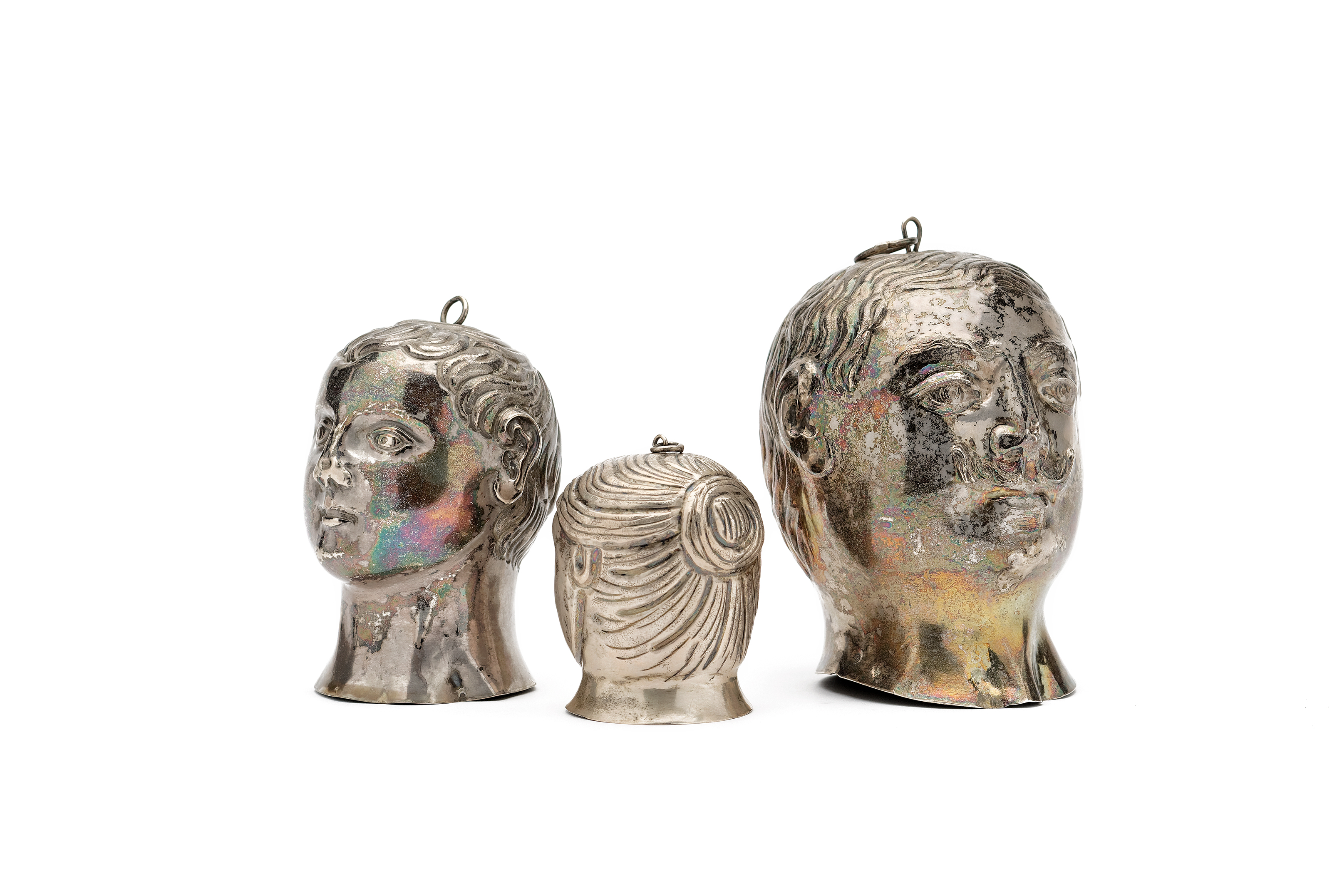Votiv Heads
German 19th century
Silver sheet
H 7 – 14 cm
Please contact us for similar objects!
Three expressive heads sculptures, made from silver sheets, with a wire loop on the crown: all three of them were expertly made to be given as votives, gifts that were offered in a place of religious importance as a prayer or thanksgiving. They were often linked to a vow and donated on the occasion or in the context of a pilgrimage – the votant thus hoped for the alleviation of distressing circumstances or thanked for betterment.
In contrast to the widespread votive reliefs which were cast or embossed in a simple way, the three heads present were expertly chased into an expressive three-dimensional form, a technique often known as repoussé. The facial features are clearly worked out, fine details testify to the attention paid to these precious gifts. Both hairstyles and the beard reflects their time of origin: the hair, which is parted strictly in the middle, and the curved moustache indicate they were made in the second half of the 19th century. During this time, from the seventeenth to the nineteenth centuries, votives played an important part in Christian popular culture in the Alpine regions .
As offerings in the form of arms, legs and organs, often generically called “lungerl” (lungs), many of the votives reproduce human body parts in a naturalistic or abstract way. Other votive gifts, however, consist of narrative panels with an added ex voto or depict farm animals and symbols. Made of diverse materials, either by the votant or by workshops in small issue numbers, they attest to this day to a strong personal belief – as three-dimensional pleas they provide protection and support in daily life.
Published in: Raum für Objekte - Ariane Laue Kunsthandel, Kat. VI - Nr. 30, Munich 2019



